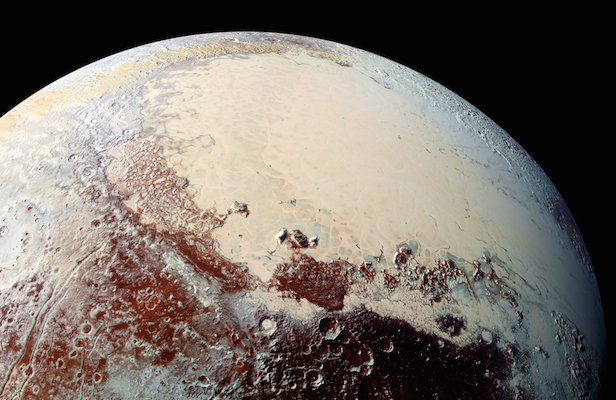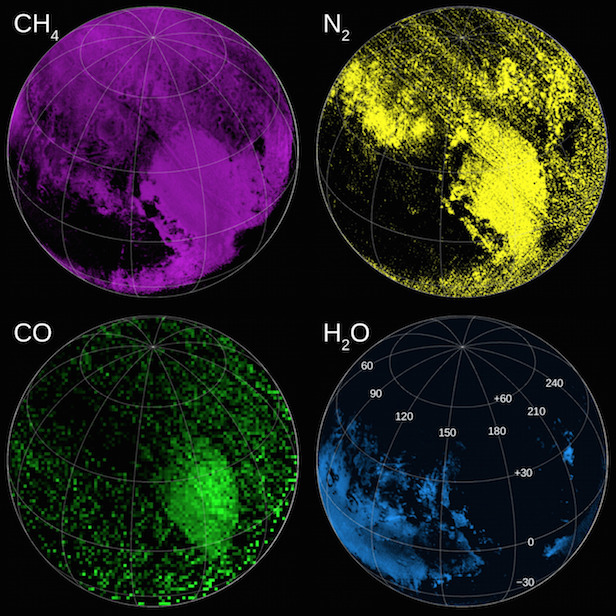Pluto could be a ‘giant comet’
New research into the formation of Pluto explores the idea that the dwarf planet was originally formed from ancient comets

New Horizons gathered many amazing images, including an astonishing close-up shot of Sputnik Planitia. Image credit: NASA/SwRI/APL
Scientists at the Southwest Research Institute (SwRI) in San Antonio, Texas, United States, have developed a new theory about how Pluto may have formed in the outer region of the Solar System. This new theory is an amalgamation of NASA’s New Horizons discoveries about the distant dwarf planet and data collected from the European Space Agency’s Rosetta mission.
The team of scientists looked the nitrogen-rich ice in Sputnik Plantia, which is a large glacier that forms the left lobe of the bright Tombaugh Regio feature on Pluto’s cold surface. “We’ve developed what we call ‘the giant comet’ cosmochemical model of Pluto formation,” says Dr Christopher Glein of SwRI’s Space Science and Engineering Division. “We found an intriguing consistency between the estimated amount of nitrogen inside the glacier and the amount that would be expected if Pluto was formed by the agglomeration of roughly a billion comets or other Kuiper Belt objects similar in chemical composition to [Comet] 67P, the comet explored by Rosetta.”
In addition to the cometary-formation model, the scientists also explored a ‘solar model’. This model suggests that Pluto formed from very cold ices that would have had chemical compositions more closely matching the composition of our Sun.

New Horizons gathered detailed maps about Pluto’s atmosphere and surface, indicating regions rich in different molecules. Image credit: NASA/SwRI/APL
There are several aspects about Pluto’s morphology that need to be understood to reveal information about the dwarf planet’s formation. The presence of nitrogen at Pluto now, whether it is in its atmosphere or glaciers, needs to be figured out, as well as how much of the volatile element escaped the atmosphere during its evolution. Scientists then also need to reconcile the proportion of carbon monoxide to nitrogen in order to gain a fuller understanding. Based on a low abundance of carbon monoxide at Pluto, scientists believe it is buried in surface ices, or faced destruction from liquid water.
“Our research suggests that Pluto’s initial chemical makeup, inherited from cometary building blocks, was chemically modified by liquid water, perhaps even in a subsurface ocean,” says Glein. On the other hand, the solar model also explains some features observed. This research has not only brought to light some interesting possibilities for Pluto’s formation, but it has brought up many more questions.
“This research builds upon the fantastic successes of the New Horizons and Rosetta missions to expand our understanding of the origin and evolution of Pluto,” says Glein. “Using chemistry as a detective’s tool, we are able to trace certain features we see on Pluto today to formation processes from long ago. This leads to a new appreciation of the richness of Pluto’s ‘life story,’ which we are only starting to grasp.”
Keep up to date with the latest reviews in All About Space – available every month for just £4.99. Alternatively you can subscribe here for a fraction of the price!




